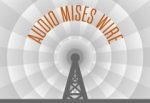This article is adapted from a lecture delivered to the Federalist Society: The Federal Reserve is a fundamental problem for the Constitutional order of the American Republic. How can it be that it considered itself able to unilaterally impose permanent inflation on the country, without legislative debate or approval?The shifting theories believed by central banks are among the most important of macro-economic factors. For example, William McChesney Martin, chairman of the Federal Reserve Board 1951-1970, rightly characterized inflation as “a thief in the night.” In remarkable contrast, the Fed under Ben Bernanke, chairman 2006-2014, explicitly committed itself and the country to inflation forever at the rate of 2% per year, thus assuming that constant inflation should not only be taken
Read More »2024-05-03





















